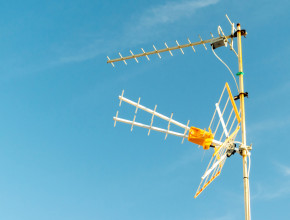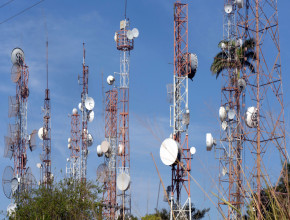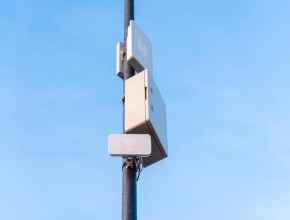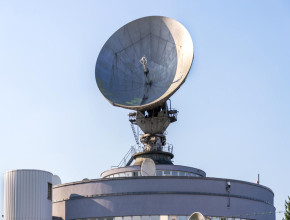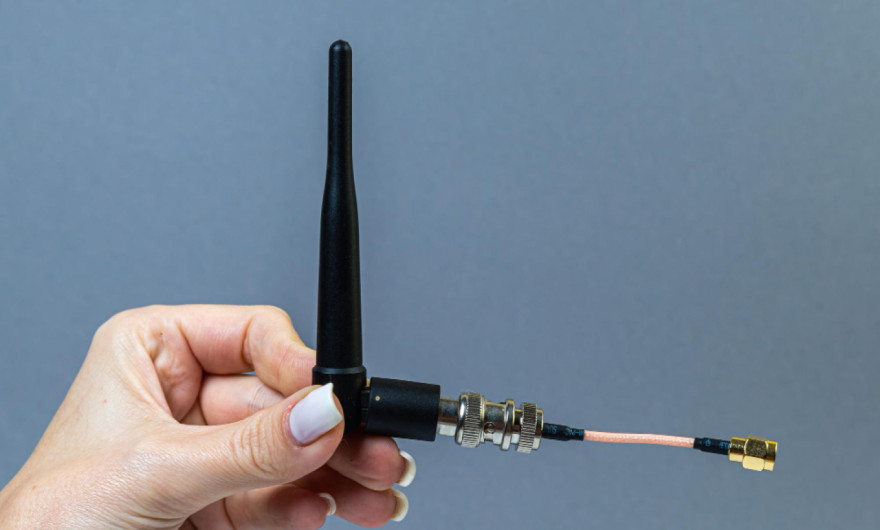
In the modern digital world, a reliable WiFi connection plays a pivotal role in our daily lives. It ensures that we get access to a seamless internet connection and we don't get interrupted in our work, communication, entertainment, and ultimately stay connected to the world. Choosing the right Wi-Fi omnidirectional antenna can be the deciding factor. In this guide, we will explore how to choose the best wifi omnidirectional antenna for your specific needs in this highly competitive digital market. Let's begin!
What is a WiFi Omni-directional Antenna?
A Wi-Fi omnidirectional antenna is a device designed to transmit and receive signals in all directions horizontally. It is designed to provide 360-degree coverage on its axis to a broad area. It is also known as a multidirectional antenna. Unlike directional antennas, which radiate and receive signals in a single targeted direction only, they ensure signals in all directions. It is best suited for places where a consistent signal is required over a large area. Omnidirectional antennas are used for diverse purposes, including home use, office environments, and public wifi hotspots (for example, parks, cafes, and shopping malls).
How to Choose the Right WiFi Omnidirectional Antenna?
To choose the right Wi-Fi omnidirectional antenna, you are required to analyse your needs first. For which purpose do you want an omnidirectional antenna? Omnidirectional antennas are best suited for work where 360-degree coverage is required, where you need to connect with multiple servers. Here are the 5 top factors that you should consider while buying a wifi omnidirectional antenna:
Determine Your Needs
First of all, contemplate the purpose you want to fulfil with your antenna purchase. An omnidirectional antenna is ideal for covering a wide area or connecting with multiple sources, for instance, cell towers. On the other hand, if you need a strong, focused signal, then you can go for a directional antenna. Both are developed to serve different purposes altogether, and users should choose by keeping in mind the demands they want to fulfil.
Consider Frequency Range
Consider your frequency range; WiFi works in 2.4 GHz and 5 GHz frequency bands. An omnidirectional antenna is designed to transmit and receive signals across all the bands. 2.4 GHz is typically used for general applications like web browsing, email, and IoT devices. 5 GHz offers higher data rates but a shorter range and less penetration through obstacles. It is up to the user for what purpose they want the antenna, and they should buy one according to their unique needs.
Consider Gain and Beamwidth
A Wi-Fi omnidirectional antenna has a gain and beamwidth that are intrinsically linked. The gain that is expressed in dBi refers to the antenna's capacity to concentrate and amplify the signal. The higher the gain, the stronger and more focused the signal. Beamwidth, which is measured in degrees, refers to the angle at which the signal is transmitted or received. Wi-Fi omnidirectional antennas have varying gain values and a broader beamwidth, ideally 360 degrees they transmit signals horizontally in all directions. User should take into consideration the gain and beamwidth while choosing their Wi-Fi antenna.
Consider Environment
While choosing the WiFi antenna, you should take into consideration the environment where the antenna will be installed. For instance, in highly dense urban areas, omnidirectional antennas will prove to be a better choice for providing broad coverage as the buildings and other structures can cause signal reflections and multipath interference. WiFi Omnidirectional antennas are presently extensively used in homes and offices all over the world due to their ability to maintain even coverage for multiple devices.
Consider Surge Protection
Surge protection is crucial for wifi omnidirectional antennas, especially in the case of an outdoor antenna, because they are vulnerable to lightning strikes and power surges. The events can damage the antenna, the connected devices, and disrupt the overall network connectivity, so if you ever plan to get an omnidirectional antenna for outside installation purposes, you should certainly think about surge protection as well.
Usage of WiFi Omni-directional Antennas
Wi-Fi omnidirectional antennas are used for their extensive coverage in various settings because of their strong signal capacity and broad area reach. Here are the spaces where they are most extensively used:
Comprehensive home coverage
These antennas are employed in homes to ensure consistent coverage in every corner. This indoor antenna should be installed in the central location to avoid any spots where the signals are weaker. They can provide signals even in yards and on multiple floors if installed strategically, like installing it on the central floor will facilitate signals on both the lower floor and the upper floor.
Full office coverage
Wi-Fi omnidirectional antennas alsoenable consistent signals in large open offices, conference rooms, and meeting areas. The indoor antenna should be deployed in the office in such a way that employees can work with uninterrupted and consistent signals regardless of their distant locations.
Outdoor and public spaces
Many outdoor spaces utilize the omnidirectional antennas, including parks, playgrounds, stadiums, campuses and educational areas, and more. In the large public areas, the outdoor antenna is usually installed on a tall building or light poles to ensure a seamless connection. It is also considered that the wifi antennas are weather-resistant to maintain their longevity and overall safety.
Summary
In brief, in this blog, we discussed the definition and factors when choosing a WiFi omnidirectional antenna. We also saw the settings where these antennas are widely deployed. In the digitalized modern landscape, ensuring smooth, seamless connectivity is essential for everybody, whether you are a working professional, a student, or anyone else. Omnidirectional wifi antennas play a crucial role in modern networking by offering centralized 360-degree signals in a particular area. By carefully considering the above factors, you can get your hands on the right Wi-Fi omnidirectional antenna on the basis of your specific requirements and ensure optimal wireless connectivity.

